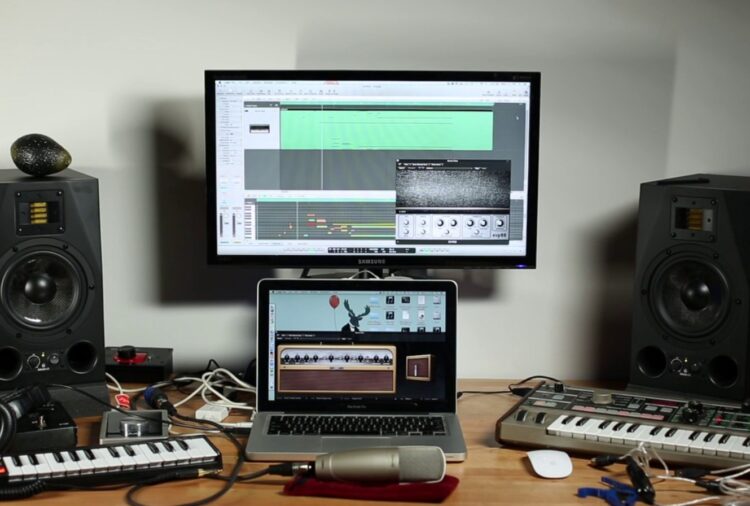
Many of us grew up watching various TV shows, movies and plays wondering how they were produced or put together. Later, when we became a little more familiar with all the creative processes behind the camera, we started asking the following – wow, what is this effect!? How was this edited!? How did they make such good music!?
Today, thanks to the powerful home computers and accessibility of information, you can create many of this content by yourself. Okay, maybe not high-budget movies, but shows, interviews, and podcasts for sure. The Internet era has provided us the freedom to express ourselves in many unique ways. We can create and release the content when we want it and the way we want it on YouTube, Instagram, and other social media platforms. We have become our personal directors, storytellers, and editors. Not to mention that many people we follow on these platforms have monetized their Internet presence.

We often ask ourselves what makes those people so successful in doing this. Well, there are more factors to it. For example, the quality of the content itself, production including now available high-quality tech equipment for video and audio recording, beautiful interior, or background, and of course – the music! Music may not seem very noticeable at first, but just remember how much of the role it played when you watched movies, cartoons, and TV shows. All the horror movies wouldn’t be as scary if it wasn’t for that wonderfully creepy music in the background. The same goes for comedies and dramas where the music enhances the content and dynamics of the given story.
Ok, since we have agreed that music plays a significant role in all the modern visual content, let’s consider how to choose the fitting one for the content that you create yourself.
First, the music should depict the emotion you want to show. For example, if you want to talk about an important topic, this requires some serious background music. This way, you will hold the viewers’ attention and they will take you seriously. This is what you want, right? In addition, you will evoke some emotion in the viewer who is watching your video, be it compassion or curiosity about the topic you are talking about. If, on the contrary, you are talking about a cheerful topic, you will likely pick a cheerful melody that encourages laughter, creativity, and simply a good mood. If you choose one that is catchy, viewers will sing it even after watching the video, thus, they will think longer about the content you have prepared for them.

Second, choosing an appropriate genre is crucial. Whether it is cheerful, sad, or even neutral music, it is important to choose the right genre of the audio track. For example, if you are discussing or reviewing some new, trending gadgets, you will likely opt for some modern sound – like soft electronica. If on the other hand, your content is related to healthy living, you will be better off with some acoustic guitar or piano sound in the background. So, choose the right genre here! Also, it is important that the music you use does not have sudden changes in rhythm or a sudden increase in volume unless it supports your story or the content. Otherwise, make sure everything is even and balanced.
Third, be careful about copyrights of the track you are planning to use. Artists like music composers, work hard and produce original works. Therefore, do not plagiarize or use their products without permission or consent. If you like a song or melody and want to use it as background music for the video, feel free to ask for a permission or license from the author or copyright owner. Apart from the fact that it is inappropriate and of course illegal to steal someone else’s work, you as an author can gain some bad reputation among other Internet authors and viewers. In order to avoid any unpredictable situation, we advise you to use royalty-free or stock music that is available in numerous music libraries such as Joystock.org and for which you do not need special licenses or permissions to use. Such an option can help you a lot and solve the complications of copyright disputes in advance, so take advantage of this great opportunity!

Fourth, make sure the music you choose communicates with your audience. This means that if you are addressing children, you will likely want to avoid using some heavy metal or hip-hop tracks, but children’s music. This does sound logical and unnecessary to mention, however, a significant number of people don’t pay a lot of attention to it when making their videos. Simply, some people are not skilled or experienced enough to think about all aspects of the presentation in the beginning. Of course, it’s not the end of the world if you make a mistake, but if you plan to take this business more seriously, you will be expected to meet some standards and people will eventually recognize it. Even if you have a good content to showcase, but you haven’t fitted all the pieces of the puzzle well together, your content that took a lot of time, nerves, and probably money to be produced, will not receive appropriate attention and praise.
Finally, make sure the music you use in your videos is not too distracting from the content. This is also obvious, but trust us, it happens very often. The focus must be on you, that is, on what you are saying or showing, the music must be loud or quiet enough not to interfere with the speech. We all remember videos in which we could barely hear what was being said and which made us annoyed because of that. This doesn’t only annoy viewers and listeners, it also turns them away from your content, and nobody wants that.

We hope you found these tips useful and that we made some music related issues a bit clearer. Picking music for your video content can be fun especially when you have so many online resources and choices to choose from. Enjoy the process!











